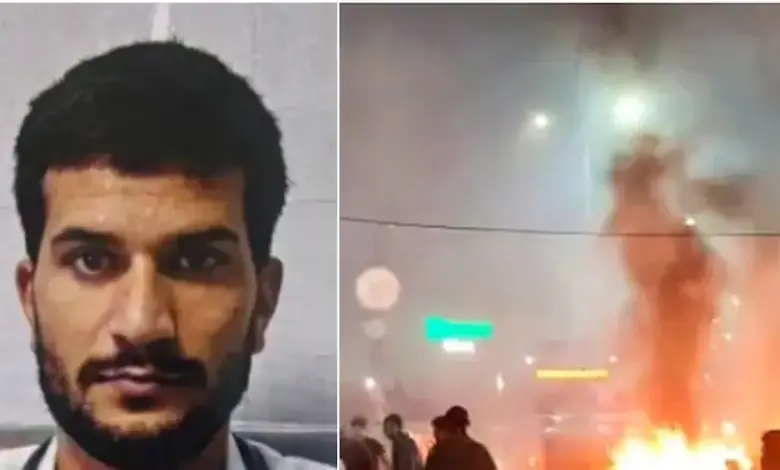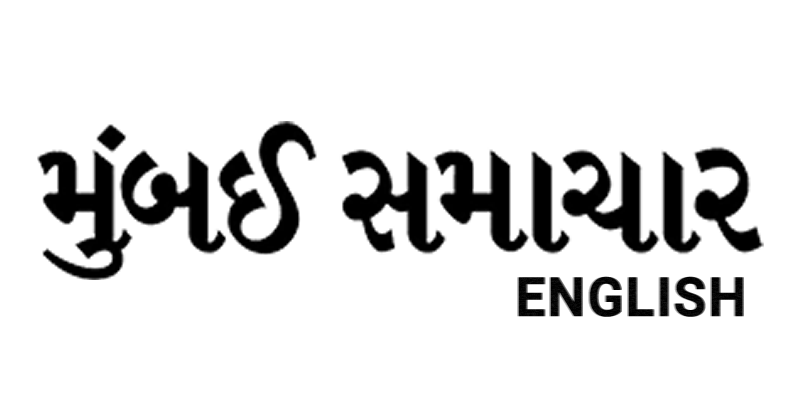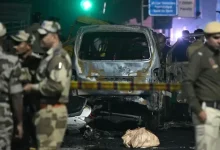
New Delhi: Investigations into the devastating car bomb explosion near Delhi’s iconic Red Fort have uncovered a shadowy financial lifeline sustaining the terror operation, with the prime suspect receiving Rs 20 lakh through illicit hawala networks, according to sources familiar with the probe.
The blast, which ripped through a crowded parking lot on Monday evening, originated from a white Hyundai i20 driven by Umar Mohammad, also known by his alias Umar Nabi. The detonation, fueled by ammonium nitrate, injured 20 people and shattered nearby vehicles, plunging the historic site into pandemonium as bystanders rushed to aid the wounded. Tragically, the attack has claimed 13 lives to date, marking it as one of the most brazen assaults on the capital in recent years.
Sources revealed that Mohammad, born in 1989 in Jammu and Kashmir’s Pulwama district, funneled the funds to acquire substantial quantities of fertilizers—key precursors for explosives—from a bustling market in Haryana’s Nuh district. He paid in cash to evade detection, a tactic that has now drawn scrutiny to a web of hawala operators. Several such dealers have been rounded up for questioning, as investigators trace the money trail back to its origins.
ALSO READ : Delhi Blast : Dr Shaheen Shahid Provided Haryana Mosque Address To Obtain SIM Card
This financial angle emerged amid a broader crackdown on a sophisticated “white collar” terror syndicate linked to the Jaish-e-Mohammed and Ansar Ghazwat-ul-Hind. The network spanned Kashmir, Haryana, and Uttar Pradesh, exploiting professional facades to mask its activities. Hours before the Red Fort strike, authorities had arrested eight individuals, including three doctors, and seized 2,900 kg of explosives in coordinated raids.
Mohammad, who posed as a doctor at Faridabad’s Al Falah University, parked the i20-laden vehicle for three hours in the vicinity. Probe teams have compiled a meticulous log of all cars entering the lot during that window, cross-referencing with witness statements. CCTV footage from the adjacent Red Fort Metro station captures the frantic prelude and aftermath at the traffic signal, while Mohammad’s image is being circulated among local drivers and vehicle owners to identify potential accomplices.
In a related breakthrough, authorities recovered 360 kg of ammonium nitrate from the university premises, where Mohammad had honed his bomb-making expertise. Two fellow ex-doctors, Muzammil Ganaie and Shaheen Sayeed—both tied to the institution—were also apprehended. The suspects reportedly relied on Threema, an encrypted Swiss messaging app, to exchange maps and operational blueprints with two foreign handlers, sources added.
The fallout has ensnared Al Falah University itself. Delhi Police’s Crime Branch filed two FIRs against the institution, citing charges of cheating and forgery. These stem from “major irregularities” flagged by the University Grants Commission (UGC) and the National Assessment and Accreditation Council (NAAC), prompting a deeper audit of its operations.
As the investigation intensifies, the Red Fort blast underscores the persistent threat of homegrown radicalization, blending everyday professions with deadly intent. With forensic teams sifting debris and interrogations yielding fresh leads, officials vow a relentless pursuit to dismantle the entire module before it strikes again.




